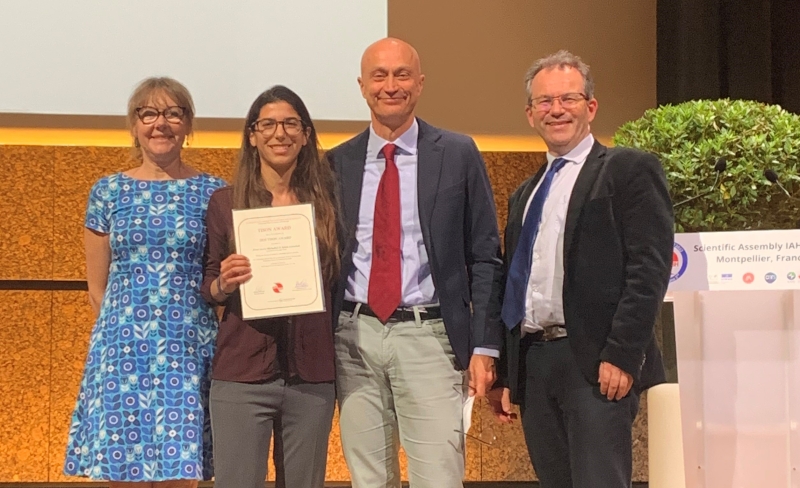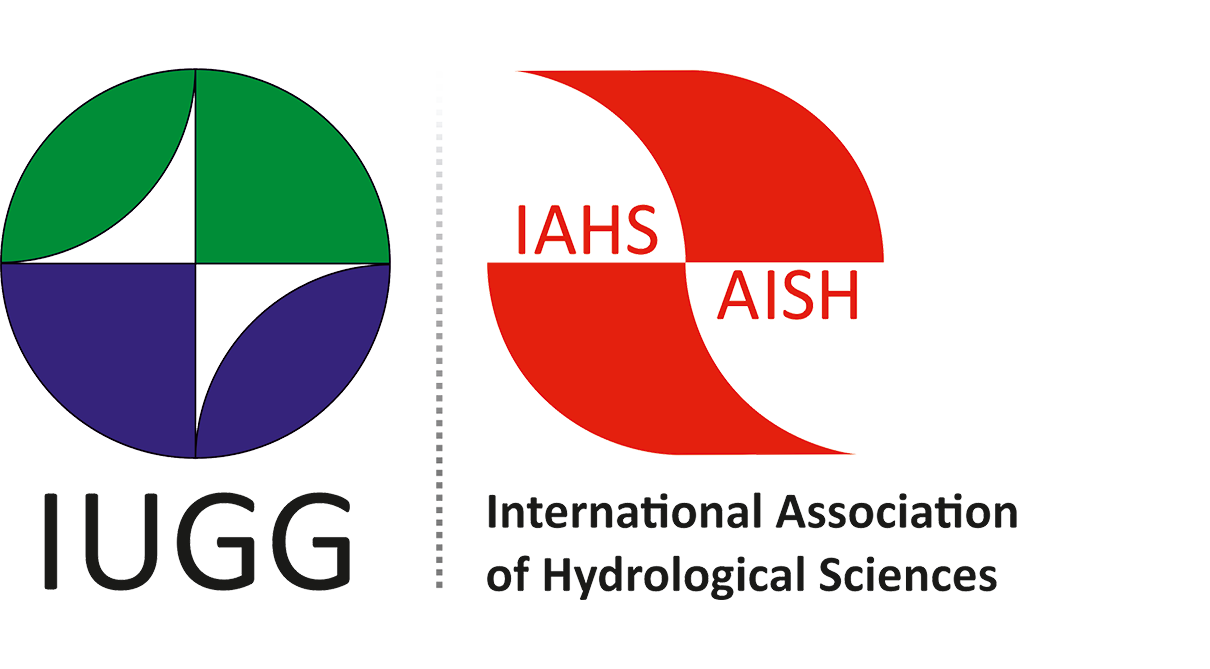THE 2020 TISON AWARD GOES TO ELENI MARIA MICHAILIDI (GREECE) AND SYLVIA ANTONIADI (GREECE)
Eleni Maria Michailidi, Sylvia Antoniadi, Antonis Koukouvinos, Baldassare Bacchi & Andreas Efstratiadis (2018) Timing the time of concentration: shedding light on a paradox, Hydrological Sciences Journal, 63:5, 721-740, DOI: 10.1080/02626667.2018.1450985
Citation from Attilio Castellarin, Editor-in-Chief of Hydrological Sciences Journal on behalf of the Jury of the 2020 Tison Award.

Left to right: Eleni Maria Michailidi (on behalf of the authors) and Attilio Castellarin (Editor-in-Chief HSJ)
The Tison Award promotes excellence in research by young hydrologists, and it is granted for an outstanding paper published in any of the IAHS publications in a two-year period previous to the deadline for nomination. The award has a long tradition in the Association and, since its establishment in 1982, it laureated many young scientists from several continents and regions of the world, some of them then became renowned hydrologists and, in some cases, prominent figures and officers of our Association. The 2020 Tison Award is co-sponsored by the publisher of Hydrological Sciences Journal, Taylor & Francis.
The 2020 Tison award goes to Eleni Maria Michailidi and Sylvia Antoniadi for their excellent paper titled “Timing the time of concentration: shedding light on a paradox”, published in 2018 in Hydrological Sciences Journal, and coauthored by Antonis Koukouvinos, Baldassare Bacchi, who sadly passed away in 2018, and Andreas Efstratiadis. The paper was selected by a jury I had the honor to chair among 15 candidate papers, a selection of very interesting and diverse hydrologic studies.
The paper focuses on the time of concentration, one of the pillars of the hydrological engineering practice, described by the authors as a “theoretical quantity, valid under ideal conditions”. Embracing the not-at-all-new hypothesis that the time of concentration of a catchment is not constant, the authors develop a kinematic approach for estimating the flow velocity and hence the travel time from the head-water sub-catchment to the catchment outlet, and test it on a large number of Mediterranean basins, confirming that the time of concentration is a negative power function of the runoff intensity.
The study opened up interesting research avenues for incorporating a variable time of concentration in lumped hydrological modelling, and also supported an improved engineering practice through a simplified and automatized GIS-based algorithm for computing the variable time of concentration of a given catchment and regional equations for estimating the parameters of the power-law linking the time of concentration to the effective rainfall intensity as a function of key geomorphological characteristics of the basin.
According to Scopus, this study received more than 30 citations to date, a clear sign that the study was well received by our community and quite “timely”.
Congratulations to the Tison 2020 awardees, and to their coauthors, for this outstanding and very valuable contribution to the advancement of our Science.
